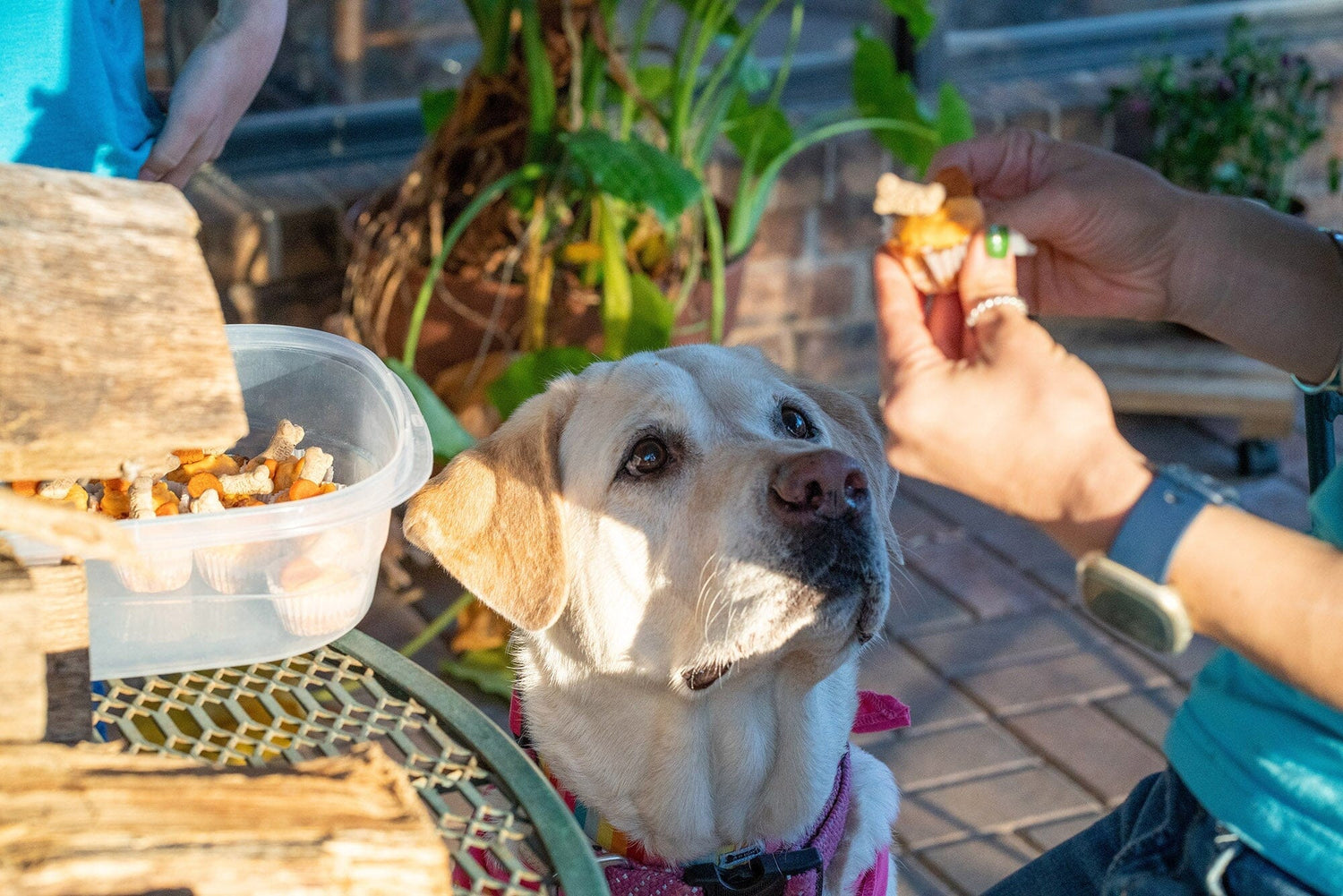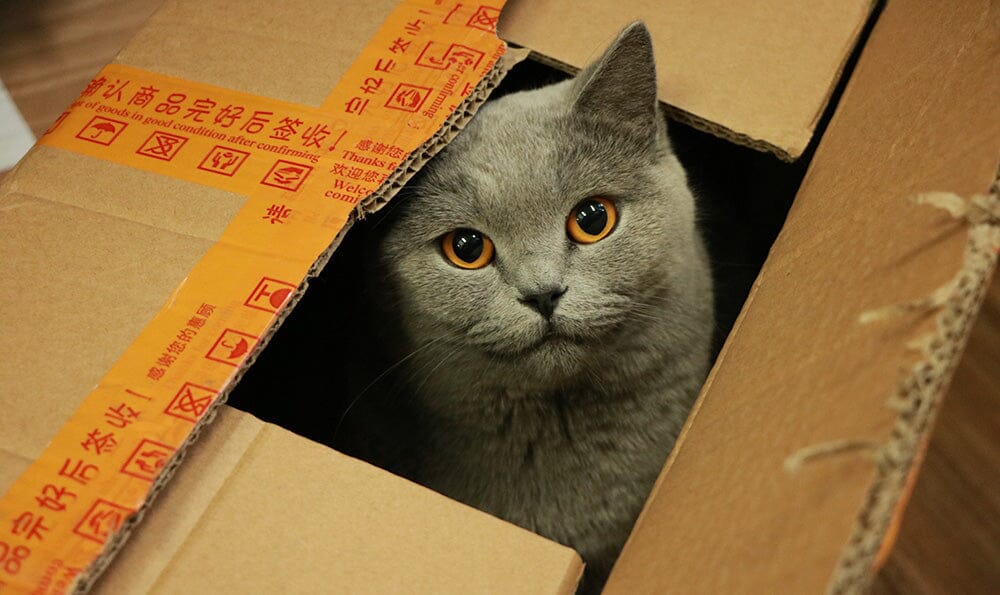When to Draw the Line with Too Many Pet Treats
Who doesn’t want to reward their animals with savory snacks and leftovers from the table? While it is enjoyable for us to spoil our pets, it may become too much for some dogs and cats battling weight issues!
Neighbors going overboard with treats, generous people on trails or at dog parks having treats in their pockets for any canine visitor who gives them a wink, or feline companions who beg for more beyond their usual fill.
Obesity is all-too-common with pets who go overboard on treats, made even worse by the treats that have a lengthy list of processed and unnatural ingredients. Those wasted calories add up, and it’s up to pet parents to read labels and be proactive in finding treats that are healthy, natural, and clean.
So how do you deal with treat-givers and navigate those boundaries of when to say ‘no?’
Let’s consider what to say to those who have the best of intentions while in the presence of your pet and want to offer him or her a snack.
The Snack Dilemma: Dog Treats, Cat Treats, Everyday Treats
Dog treats in your pocket, treats on the shelves, treats in the car, treats in your backpack, treats in the refrigerator, even treats in the garage… where does it end?
The snack dilemma has possibly posed more risk for your dog or cat than the actual food they’re eating!
Oftentimes, if your pet has too many treats, this can jeopardize their appetite and leave them nutritionally deficient.

When One Too Many Treats Lead to Health Issues
Too many treats leads to obesity, which has become more of a problem around the world, most notably in highly developed countries. Poor societies typically don’t overfeed their animals, because their culture believes the dog or cat roaming the streets can naturally fend for themselves.
America, however, gives dogs and cats a treat for absolutely everything and then some. Good behavior, bad behavior, returning or leaving home, and maybe just because they exist!
Why is it important to know when to draw the line?
Feeding too much can create problems for a dog or cat’s tummy. Watching your pet gobble up treats is fun and rewarding, but it’s important to remember that most pets aren’t programmed to keep track of their food intake, especially dogs.
In fact, many dogs will keep eating as long as you continue to hand out delicious little morsels of food. Overeating can lead to an upset stomach, bloating, vomiting, diarrhea, or overall lethargy.
Allergic reactions or sensitivity to the ingredients inside of pet treats can spell trouble for your dog or cat too. It can cause vomiting, lethargy, facial swelling, or itchiness.
If your pet is struggling to breathe after a treat, take them to the vet immediately as anaphylaxis shock – while a rarity – could pose a life or death situation.

Poor quality or tainted pet treats from China has happened many times. Poisoning in this country happens and it’s best to avoid if possible.
Regardless, always pay attention to the ingredients of the treats you buy and make certain everything listed on the label is all-natural, American-made products.
What to Look For When Buying Treats for Your Pet
When considering buying treats for your dog or cat, remember that you must read the labels and know any allergens that can cause a poor reaction in your pet. It’s always a good idea to avoid generic brands, and visiting the more healthy section of pet stores.
Here are more things to consider when shopping for treats:
- Generally, less is more with cat and dog treats. Avoid products with long and/or confusing ingredients listed. Instead, stick to treats that have few and mostly whole ingredients.
- Avoid products with words like “meat by-product” or “animal meal.” These are low-quality and questionable proteins that could potentially make your pet ill.
- Don’t purchase pet treats that use chemicals or fillers, such as soy, corn, and wheat.
Stick with brands you trust or have been referred to you by a trusted, natural wholesaler. When in doubt, check labels, question ingredients that don’t seem appropriate, and bypass the aisles with the more popular – yet trendy – packaging.
The better educated you are as a pet parent, the more your dog or cat will maintain a healthy weight and gut.

Healthy Pet Treats
Does all this mean you should give up giving your pet treats all together? Certainly not. However, the amount of treats you give your pet also depends on how active they are. Older pets, lazy cats and dogs that are not as active as they should be also need to consume less calories than younger or more active breeds.
The good news is that with a bit of research you can find healthier treats on the market and in your fridge that will be better for your pet.
Base the amount of treats on your pet’s activity and entire day’s worth of caloric intake, and look to those companies who make the all-natural, wholesome, and American-made treats. You can also find several online pet recipe natural treat sites or resources on apps like Pinterest if you find yourself wanting to whip up some treats of your own!
Although not all human food is safe for dogs to eat, some people foods that can be make good dog treats include chicken, salmon, pork, sweet potatoes, and healthy vegetables or acceptable fruits (blueberries, apples, strawberries).
A Note on Dog Treats
Because dog treats tend to be the more common offering, here are three categories of treats that pups will enjoy and give you peace of mind:
Crunchy biscuits – choose ones with no fillers, no by-products, or chemicals. Some dogs also have allergies to wheat, corn, or soy- it’s good to avoid those ingredients as well.
Soft baked – sinking their teeth into a soft goody is rather awesome for your dog, especially when it’s dense, savory, and bite-sized. Using soft-baked treats for training is also a great reward for puppies that tends to be well received!
Freeze-dried – Dogs love to chew on things. Bully sticks, jerky strips, bone marrow, you name it, and they can spend hours gnawing on a treat. Freeze-dried chews are fun for your dog to gnaw on, and they can be extra flavorful. Just make certain they’re made of only one ingredient – meat. Try to avoid the ones made with ingredients from grains, wheat, corn, or soy. Plus, freeze-dried treats are lower in fat and overall calories.
More and more often, you’ll see retail or online pet stores highlighting their more natural dog treats with the healthiest ingredients. Customers flock to these because they understand the value of giving your pet something that agrees with their stomach and activity level.
The only way to prevent illness or weight issues in your pet is to know their limits, give them only top-notch quality treats, and avoid giving them too much.
Time to Say 'No'
Bottom line pet owners must set boundaries in order for their pet to avoid becoming dependent on treats. For instance, being diligent and sticking to your rules will not only benefit your pet by training them to listen to you but it will also help manage their weight.
You might even need to set a strict number limit to help keep track of when it’s time to halt the handouts.
Stopping Others from Feeding Your Pet
This is such a tough situation with people who adore animals and want them to thrive. Most cat and dog guardians welcome fellow pet owners giving treats to their beloved four-legged family members. But, others are aware of the issues that constant treats can cause, one of which is causing unnecessary begging from the animal.
The time to say ‘no’ is now.
It is totally okay to have boundaries with overly generous neighbors or family members who allow your pet to lick leftover human plates and scraps from the table.
No one else knows what’s going on with your dog’s health. It really is up to YOU, the owner/guardian, to speak up.
Here are a few example statements of ways to let others know it’s not always okay to feed your dog, whether at a dog park, meeting on the street, or visiting their home:
- “Thank you, but I’d prefer if my dog didn’t get treats from the table or from your pockets.”
- “I appreciate your kindness, but I’m the only one who gives my kitty a treat.”
- “My dog has some allergies to ingredients other than what I give him/her, so it’s best not to offer them a treat, but thank you anyway!”

This will set the boundary and show the person – and your dog, that you care. At first, it might seem a bit daunting to utter these words, but respect should always come first when it comes to anyone’s pets. Most people will understand your caution.
Keeping Yourself From Giving Too Many Treats
Limiting dog treats and catnip is tough when those innocent eyes are staring up at you. Once they hear a package open or catch a whiff of anything remotely similar to a treat- you’ll no doubt have to make a decision. Resisting the temptation to feed too many dog treats doesn’t have to be a struggle.
Instead, discourage situations that lead to your dog begging for a treat. Don’t eat in front of them, and don’t have your pup or kitty in the kitchen when preparing meals. Simple, right?
Distraction works well, too. Play or take a walk outside with them. Praise them with pets, cuddles, soft and affirmative voices, and belly rubs. In time, they’ll realize that their behavior can be rewarded with other tangible things besides a constant merry-go-round of treats.
The Final Word on Treats ...
Being a responsible pet owner, sometimes requires making decisions that don’t seem “fun”. Like telling your fur friend no. Avoiding the habit of feeding treats on top of your pet’s daily caloric intake of regular food, doesn’t sound fun but is important for their health!
When treats are not kept under control, pets can experience weight gain and have expectations you’ll need to break at some point. Excess weight can also cause your pet to have other medical issues such as increased chance of heart problems, respiratory issues, and arthritis and joint pain.
If your four legged friend is more chubby than cuddly, stopping treats and putting them on a regiment to control their weight may be a good idea. One such remedy is the BestLife4Pets Healthy Weight for Dogs and Cats remedy which addresses the key factors for obese dogs or cats. This remedy safely increases your pet’s metabolism and helps curb cravings so they won't keep begging for more food! Of course, no weight loss regiment is going to work if you don't reduce your pet's caloric intake.
Pet treats add up. While cat treats are generally not as bad as dog ones, they’re are still many on the market today for both dogs and cats that are high in calories and may include ingredients that don’t agree with your pet’s body. Limit treats to around 10% of your pet’s daily caloric diet. You can even halve the treats to satisfy their craving! They won’t know the difference and will be just as excited and grateful to be on the receiving end of some rather healthy morsels at odd hours of the day. We love our pets, but stay strong and don’t let the pleading eyes get the best of you!



